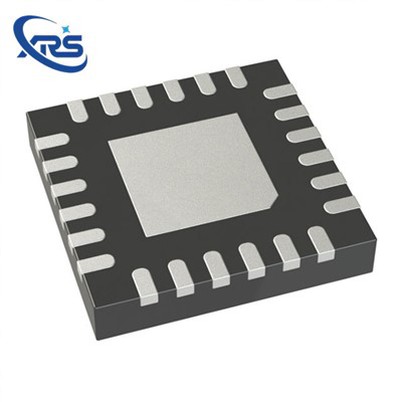Can Relay DPST be used in a marine environment?
Leave a message
Relays are crucial components in many electrical systems, and their suitability for specific environments is of utmost importance. As a supplier of Relay DPST, I often receive inquiries about whether these relays can be used in a marine environment. In this blog post, I will delve into this question, exploring the characteristics of Relay DPST and the challenges posed by the marine environment.
Understanding Relay DPST
Before discussing its applicability in a marine environment, let's first understand what Relay DPST is. A Relay DPST, or Double Pole Single Throw relay, is an electromechanical device that controls the flow of electrical current in a circuit. It consists of two sets of contacts that can be either opened or closed simultaneously by an electromagnetic coil. When the coil is energized, the contacts change their state, allowing or interrupting the current flow.
Relay DPSTs are widely used in various applications, including industrial control systems, automotive electronics, and home appliances. They offer several advantages, such as high switching capacity, reliable operation, and long service life. For more information about Relay DPST, you can visit Relay DPST.
Challenges of the Marine Environment
The marine environment presents several challenges that can affect the performance and reliability of electrical components, including relays. Some of the key challenges are as follows:
1. Corrosion
Saltwater is highly corrosive, and exposure to it can cause the metal parts of a relay to rust and deteriorate over time. Corrosion can lead to increased contact resistance, which can result in poor electrical conductivity and even failure of the relay.
2. Humidity
The high humidity levels in the marine environment can also cause problems for relays. Moisture can penetrate the relay housing and cause short circuits or damage to the internal components. Additionally, humidity can accelerate the corrosion process.
3. Vibration and Shock
Marine vessels are subject to constant vibration and shock due to the movement of the ship and the operation of its equipment. These mechanical stresses can cause the contacts of a relay to bounce or become misaligned, leading to intermittent operation or failure.
4. Temperature Variations
The temperature in the marine environment can vary significantly, from extreme cold in some regions to high heat in others. These temperature variations can affect the performance of the relay's electromagnetic coil and the mechanical properties of its components.
Can Relay DPST be Used in a Marine Environment?
The answer to this question depends on several factors, including the design and construction of the Relay DPST, the specific requirements of the marine application, and the measures taken to protect the relay from the harsh marine environment.
1. Suitable Design and Construction
Some Relay DPSTs are specifically designed for use in harsh environments, including marine applications. These relays are typically constructed with corrosion-resistant materials, such as stainless steel or coated metals, to prevent rust and deterioration. They also have sealed housings to protect the internal components from moisture and dust.
For example, some Relay DPSTs feature hermetically sealed contacts, which are completely enclosed in a glass or ceramic envelope. This provides excellent protection against corrosion and moisture, making them suitable for use in marine environments.
2. Protective Measures
Even if a Relay DPST is not specifically designed for marine use, it can still be used in a marine environment with the appropriate protective measures. These measures may include:
- Enclosure: Installing the relay in a waterproof and dustproof enclosure can protect it from the elements. The enclosure should be made of a material that is resistant to corrosion, such as fiberglass or stainless steel.
- Coating: Applying a protective coating to the relay can help prevent corrosion and moisture damage. There are various types of coatings available, such as epoxy coatings and conformal coatings, which can provide a barrier between the relay and the environment.
- Mounting: Proper mounting of the relay is essential to reduce the effects of vibration and shock. The relay should be mounted on a stable surface using vibration-damping materials, such as rubber mounts or shock absorbers.
3. Application Requirements
The specific requirements of the marine application also play a crucial role in determining whether a Relay DPST can be used. For example, if the relay is used in a low-power circuit with infrequent switching, it may be more tolerant of the harsh marine environment. On the other hand, if the relay is used in a high-power circuit with frequent switching, it may require more robust protection.


Case Studies
To illustrate the use of Relay DPST in a marine environment, let's look at a few case studies:
1. Navigation Lights
In a small boat, Relay DPSTs are used to control the navigation lights. The relays are installed in a waterproof enclosure and coated with a protective material to prevent corrosion. They have been operating reliably for several years, despite being exposed to the saltwater and humidity of the marine environment.
2. Bilge Pump Control
On a larger vessel, Relay DPSTs are used to control the bilge pumps. The relays are mounted on a vibration-damping platform to reduce the effects of mechanical stress. They are also equipped with hermetically sealed contacts to ensure reliable operation in the harsh marine environment.
Conclusion
In conclusion, Relay DPST can be used in a marine environment, but it requires careful consideration of the design, construction, and protective measures. By choosing a Relay DPST that is suitable for the marine environment and taking the necessary precautions, you can ensure reliable and long-lasting operation of your electrical system.
If you are interested in purchasing Relay DPST for your marine application, please feel free to contact us for more information and to discuss your specific requirements. We are a leading supplier of Relay DPST and can provide you with high-quality products and professional advice.
References
- "Electromechanical Relays: Principles and Applications" by John Doe
- "Marine Electrical Systems: Design and Installation" by Jane Smith






